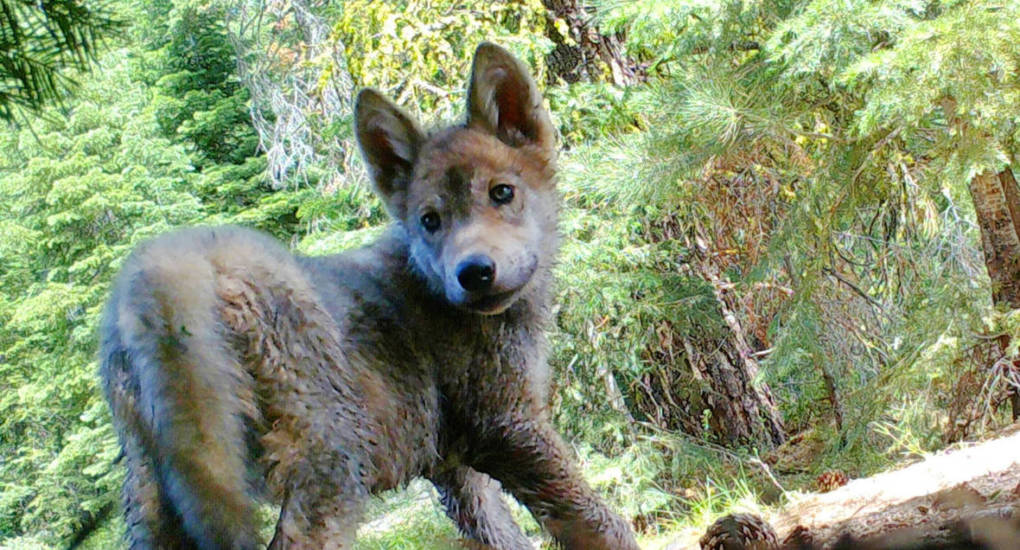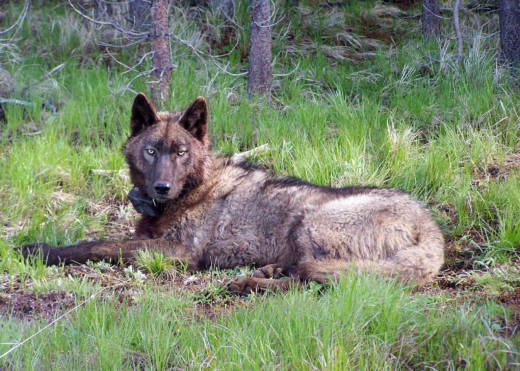Gray wolves are trekking farther south in California. A 2-year-old female, known as OR-54, recently wandered through Nevada County in the northern Sierra Nevada. Until now, the California Department of Fish and Wildlife had reported wolves only as far south as Lassen County.
“She’s made her way all the way down into the Sierra, and that’s so exciting because this is its prime wolf habitat,” said Amaroq Weiss of the Center for Biological Diversity. “It’s an area that scientists have identified for a long time as being good wolf habitat.”
The wolf is collared with a GPS transmitter that allowed officials to determine her whereabouts just off Interstate 80, near Boreal Mountain.
OR-54 is so named because she was the 54th wolf Oregon biologists have radio collared. She’s following in her father’s historic footsteps. Known as OR-7, he was the first gray wolf to cross into California from Oregon in almost 90 years. Wolves are making a comeback in the West after they were eradicated by humans during the 1920s.

“The fact that we have wolves coming back to California is a great testament to the federal and state Endangered Species Act protections that have allowed these remarkable species to recover,” Weiss said.
